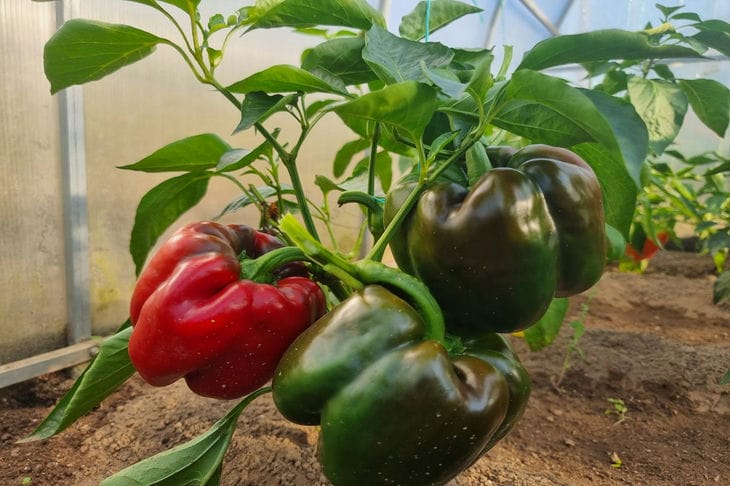How to Feed Bell Peppers in September: Secret Recipes for a Record Harvest
September is a key month for bell peppers.
Proper feeding during this period can significantly increase yields and improve the taste of the fruit.
Experienced gardeners know that in order to harvest a generous crop of juicy and aromatic peppers, it is necessary to pay special attention to their nutrition in the fall.
Features of autumn feeding of peppers
In September, bell peppers enter the final fruiting phase. During this period, plants need enhanced nutrition to form the last fruits and prepare for the end of the growing season.
Correctly selected fertilizers will help peppers realize their potential and produce maximum yield.

Organic fertilizers
Compost or humus serves as an excellent basis for feeding peppers in September.
These organic fertilizers enrich the soil with nutrients and improve its structure. Adding compost to the tree trunks at a rate of 0.5-1 kg per plant will provide the pepper with the necessary nutrients.
Mineral complexes
For balanced nutrition of peppers in September, complex mineral fertilizers with a reduced nitrogen content and increased potassium and phosphorus content are suitable.
These elements help improve the taste of fruits and increase plant resistance to diseases. It is recommended to use specialized mixtures for nightshade crops, following the instructions for use.
Potassium fertilizers
Potassium plays an important role in the formation of the taste and aroma of peppers. It also increases the resistance of plants to adverse weather conditions.
Potassium sulfate or potassium magnesium sulfate is added to the soil at a rate of 15-20 g per square meter. Wood ash, rich in potassium and microelements, can also serve as an excellent fertilizer.
Phosphorus fertilizers
Phosphorus is necessary for the development of the root system and ripening of fruits. Superphosphate, added to the soil in the amount of 20-30 g per square meter, will provide the pepper with the necessary amount of this element. Phosphorus fertilizers are best applied when loosening the soil around the plants.
Microelements
Peppers also require microelements for full development. Boron improves flower pollination and prevents ovary shedding.
Magnesium is involved in photosynthesis and the formation of chlorophyll. Complex fertilizers with microelements or special solutions will help provide plants with everything they need.
Folk remedies
Many gardeners successfully use folk methods of feeding peppers. Infusion of onion peel, rich in phytoncides and microelements, strengthens the immunity of plants.
Iodine solution (1 drop per 10 liters of water) stimulates the growth and development of pepper. These products can be alternated with mineral fertilizers to achieve the best result.
Methods of applying fertilizers
Pepper fertilization in September can be done both by root and foliar methods. When applying the fertilizer to the roots, it is dissolved in water and watered under the roots of the plants.
Foliar feeding involves spraying the leaves with a fertilizer solution. This method is especially effective for the rapid absorption of microelements.
Frequency of feeding
In September, it is enough to carry out 1-2 pepper fertilizing. The first fertilizing is recommended to be done at the beginning of the month, the second - in 2-3 weeks.
It is important not to overdo it with fertilizers, as excess nutrients can lead to reduced yields and deterioration in fruit quality.
